An architectural tour of my novels
An architectural tour of my novels
An architectural tour of my novels
-
Hannah
-
Hannah
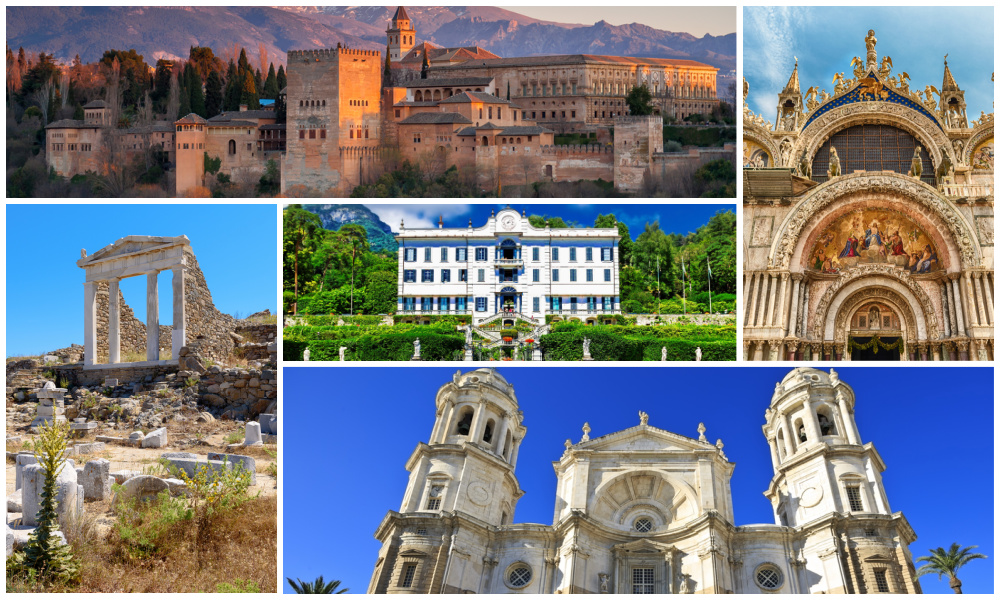
The Alhambra, Granada, Spain
The Alhambra – which features in my novel Indiscretion – is an amalgamation of fabulous Arabesque palaces and a fortress complex built by the Moors in the 13th century on a steep wooded hill. Rising upon its reddish crag, the palace is straight out of the Arabian Nights. Nowhere else did the Moors create such decorative art and such exuberant splendour: centuries of craft, design and technique delicately carved in stone, marble, plaster and wood, with gushing fountains and canals, a glorification of a long-distant past.
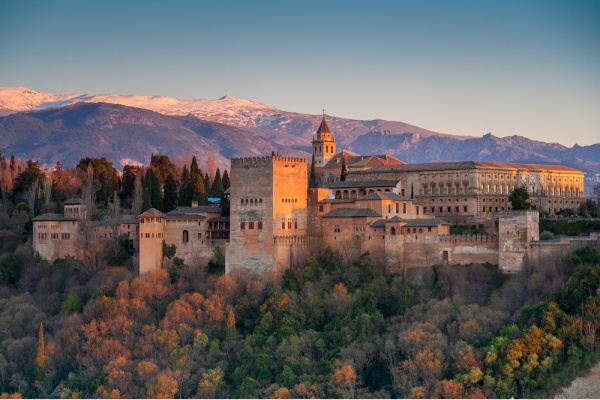
The Hall of the Abencerrages is especially stunning: a perfectly square room that rises to a high dome decorated in blue, brown, red and gold in the mocárabe style – an ornamental design incorporating prisms that resemble stalactites. But as I share in Indiscretion, there is a rather dark legend associated with this hall!
St Mark’s Basilica, Venice, Italy
In my novel The Echoes of Love, the heroine, Venetia, is an architect, and so she really appreciates all the beautiful and historic buildings of Venice. While sitting in a pavement café in the Piazza San Marco (St Mark’s Square) – ‘the drawing room of Europe’, as Napoleon called it – she feasts her eyes on the relics of Venice’s architecture and art history. Her eyes are invariably drawn to the Basilica Cattedrale Patriarcale di San Marco (St Mark’s Basilica), which lies at the eastern end of the piazza:
St Mark’s Basilica stood majestically, a symbol of Venice’s history of wealth and power and a famous example of Byzantine architecture with its opulent mosaics, marble decor and huge arches. The four colossal bronze horses set into the façade of the magnificent cathedral looked out over the square like triumphant guardians. Venetia never tired of looking at the five glorious golden domes sitting on top of it, exotically eastern, and in front of it, the freestanding belltower of the Campanile, towering above her.
The Basilica, which dates back to the 11th century, is famous for the intricate decorations on its façade – absolutely stunning, as you can see:

Cadiz Cathedral, Andalusia, Spain
Here is the Catedral de Santa Cruz, which dates back to the 18th century. At the time of its construction Cadiz was enjoying a golden age, thanks to the growth of trade from the port to the Americas, and the cathedral was built over more than a century to exemplify all that is great about Cadiz.
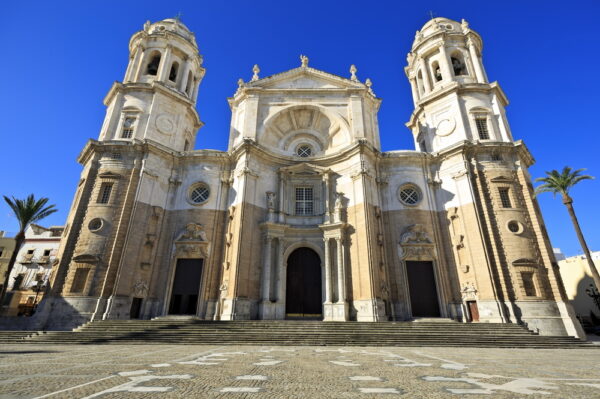
The architecture is a mix of Baroque and Neoclassical in style, and from the Torre de Poniente, the bell tower, you can take in breath-taking views over the city laid out below. The gold dome roof is especially iconic. When the heroine of my novel Legacy attends a concert in the cathedral, she looks up to see the vaulted ceiling rising above in a tessellation of rounded arches, reaching up to the dome, and imagines it ‘suspended like the pale insides of some magnificent giant sea urchin’.

Legacy: available to buy from my shop
The ruins at Delos, Greece
The heroine of my novel Aphrodite’s Tears is an archaeologist, and so she can’t miss an opportunity to visit Delos. This Greek island is, quite simply, an archaeologist’s heaven, with more excavations than any other site in the Mediterranean. I write:
The ruins near the lake were beautiful, full of primitive echoes and the amazing phosphorescence of Apollo’s light. Oriel found herself walking softly in this enchanted land, as if the ghost city could still feel and hear. She listened to Damian telling her what each edifice would have been – and he spoke so vividly that she could see them in her mind’s eye, in all their former splendour: the temples, the stoas, the luxury villas, like the House of Masks and the House of Dolphins.
In the ruins on the island there is so much to learn about the Ancient Greek way of life and their architecture. There are many wonderful and very precious mosaics, such as the one on the floor of the House of Dolphins, and a good number of columns remain. Here is what remains of the Temple of Isis:
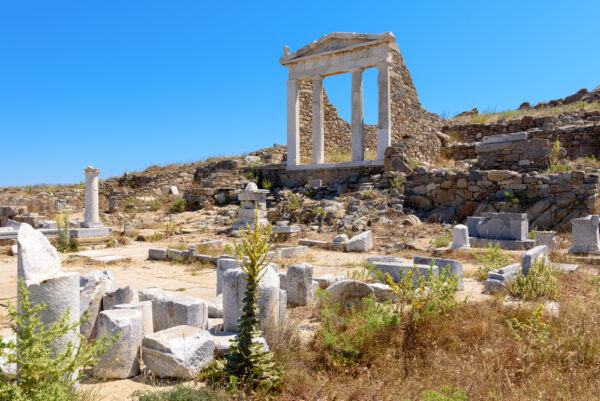
Villa Carlotta, Lake Como, Italy
My latest novel, Concerto, is set on Lake Como, which is a truly beautiful part of the world and is well known for its belle-époque waterfront villas. There are several prominent villas on the shores, but perhaps the grandest is Villa Carlotta in Tremezzo, from which I took inspiration for Villa Monteverdi, home of composer Umberto in Concerto.
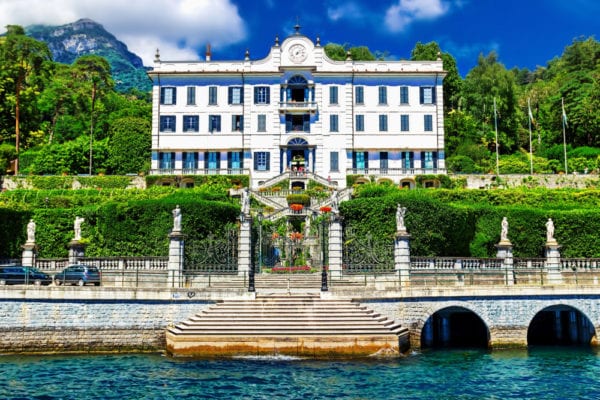
The villa was built in the 1740s by the Clerici family, a grand country estate with terraced gardens featuring sculptures and fountains. It became Villa Carlotta in 1847, when Princess Marianne, wife of Prince Albert of Prussia, bought the villa as a wedding gift for her daughter, Charlotte, and her husband, Duke Georg II of Saxen-Meiningen. When the Duke died, a charitable foundation was established to run the property, and now it is open to the public as an art museum.

Concerto: available to buy from my shop